
Lasers, Optics, Light, and Electronics. The optical engineering lab is for hands-on experience manipulating light. You will be in the dark. You will calibrate photodetectors and learn quantitative radiometry. Later on, you will align lasers, grind mirrors, and splice fiber optics. By building your own spectroradiometers, microscopes, and interferometers from basic components, you'll acquire the critical skills needed to join one of more than 80 Oregon companies employing engineers that need to handle light in interesting ways. Below is a list of random stuff in the lab.
Optical Tables
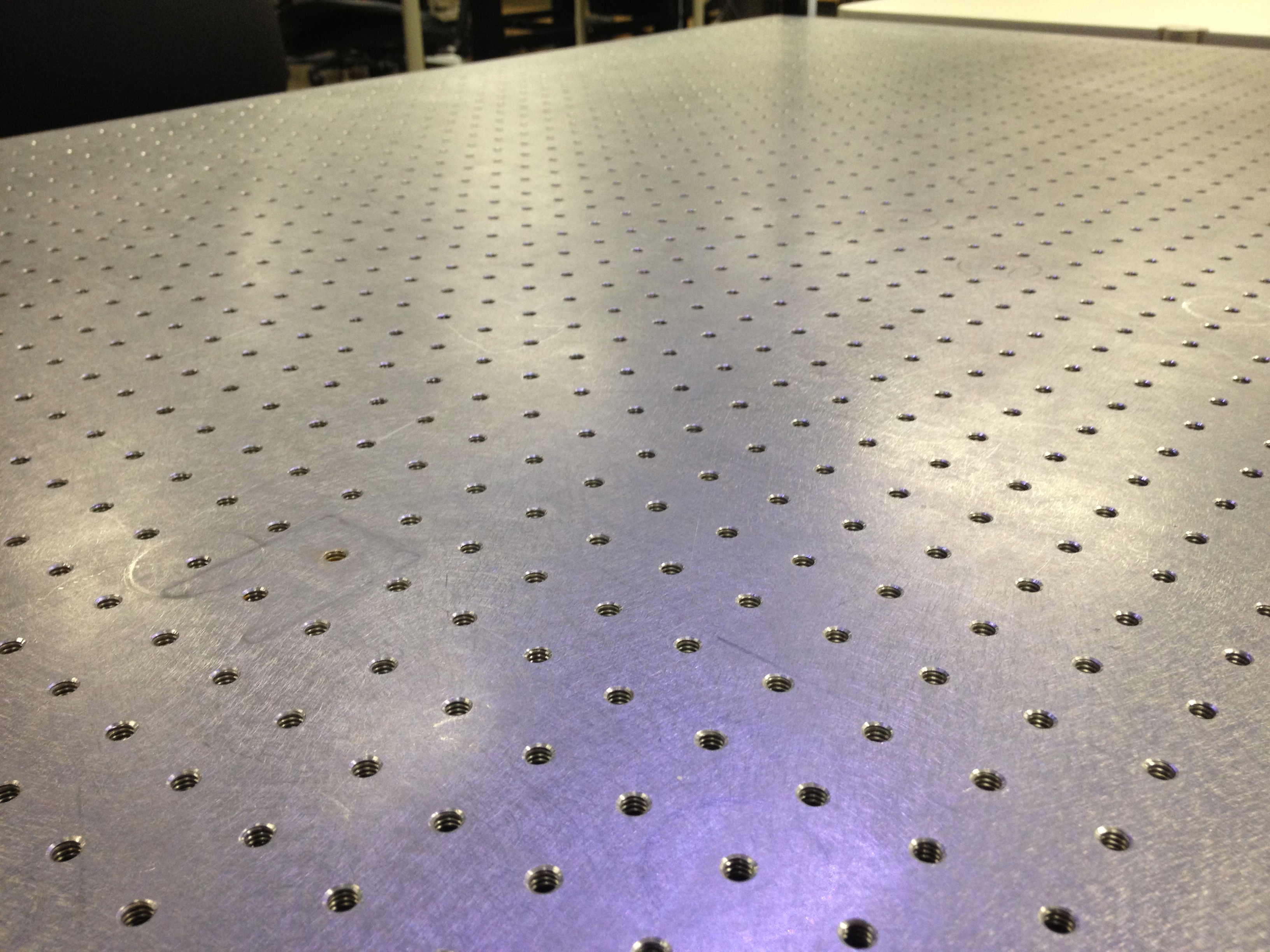
We're lucky to have six optical tables for students. While most experiments can be done with an optical rail on a traditional bench or even a small 2x2' optical pad, the extra space makes a lot of experiments easier. These optical tables are just a chunk of metal with a bunch of threaded holes. The table is flat which makes alignment easy. The holes are on one inch centers with 1/4"-20 threaded holes. Yes, I know all about the metric system, but these work just fine. The metal table also means that we can use magnetic bases for optical components. Finally, the table makes an excellent grounding plane.
Floating Tables
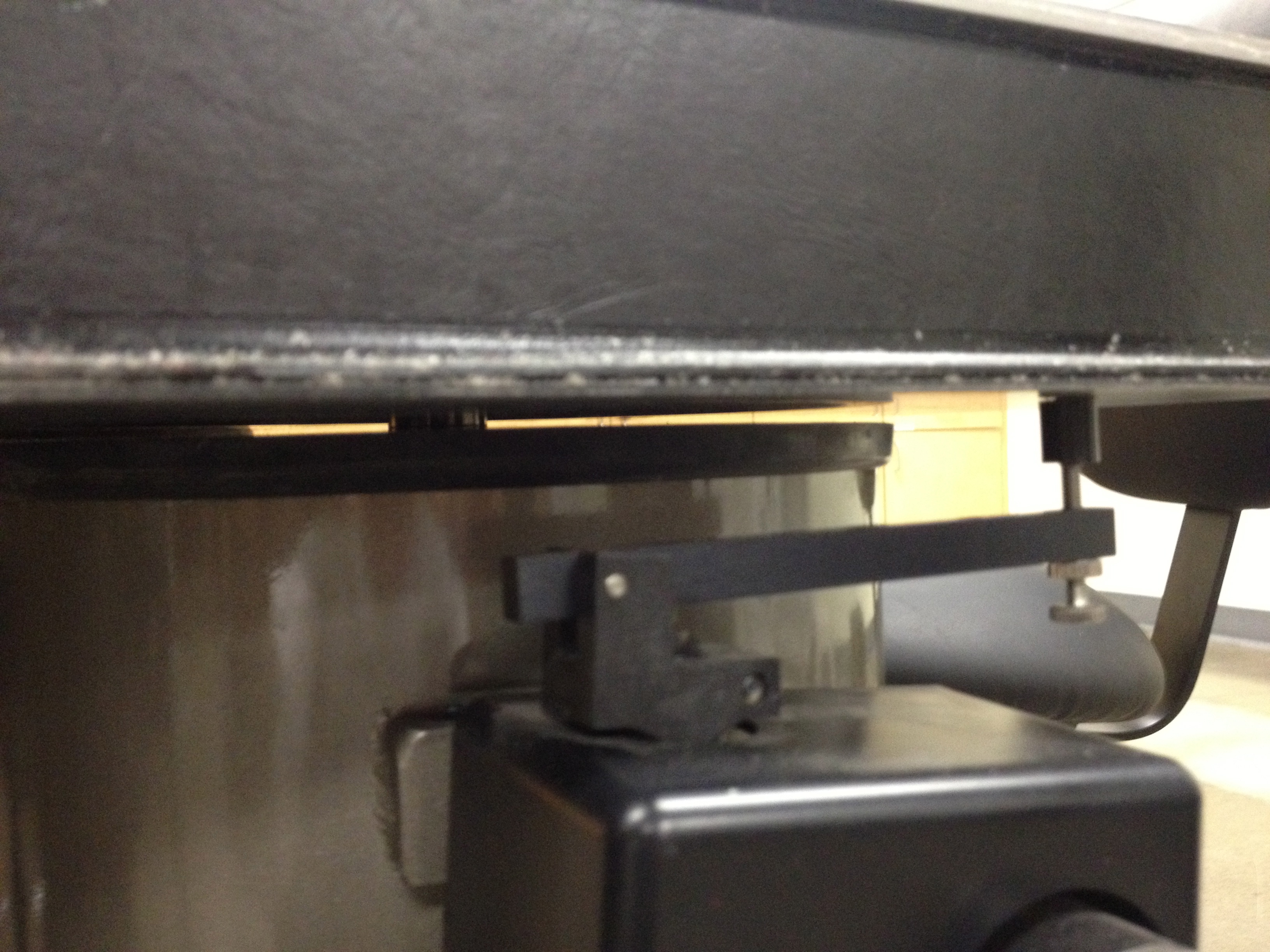 All our tables float on air to minimize vibrations. The lab is located on a concrete
slab directly on the ground (no basement) so we don't have a bunch of problems with the vibrations in the buildings. However, the pneumatic float system minimizes the vibrations even more.
If you look between the bottom of the table and the top
of the large cylinder below, you'll see a small piston (the dark rectangle) that is supporting the table. The piston, in turn, sits on top of a inflated rubber bladder. The
pressure in the bladder is controlled by the lever extending to the right.
All our tables float on air to minimize vibrations. The lab is located on a concrete
slab directly on the ground (no basement) so we don't have a bunch of problems with the vibrations in the buildings. However, the pneumatic float system minimizes the vibrations even more.
If you look between the bottom of the table and the top
of the large cylinder below, you'll see a small piston (the dark rectangle) that is supporting the table. The piston, in turn, sits on top of a inflated rubber bladder. The
pressure in the bladder is controlled by the lever extending to the right.
Lights
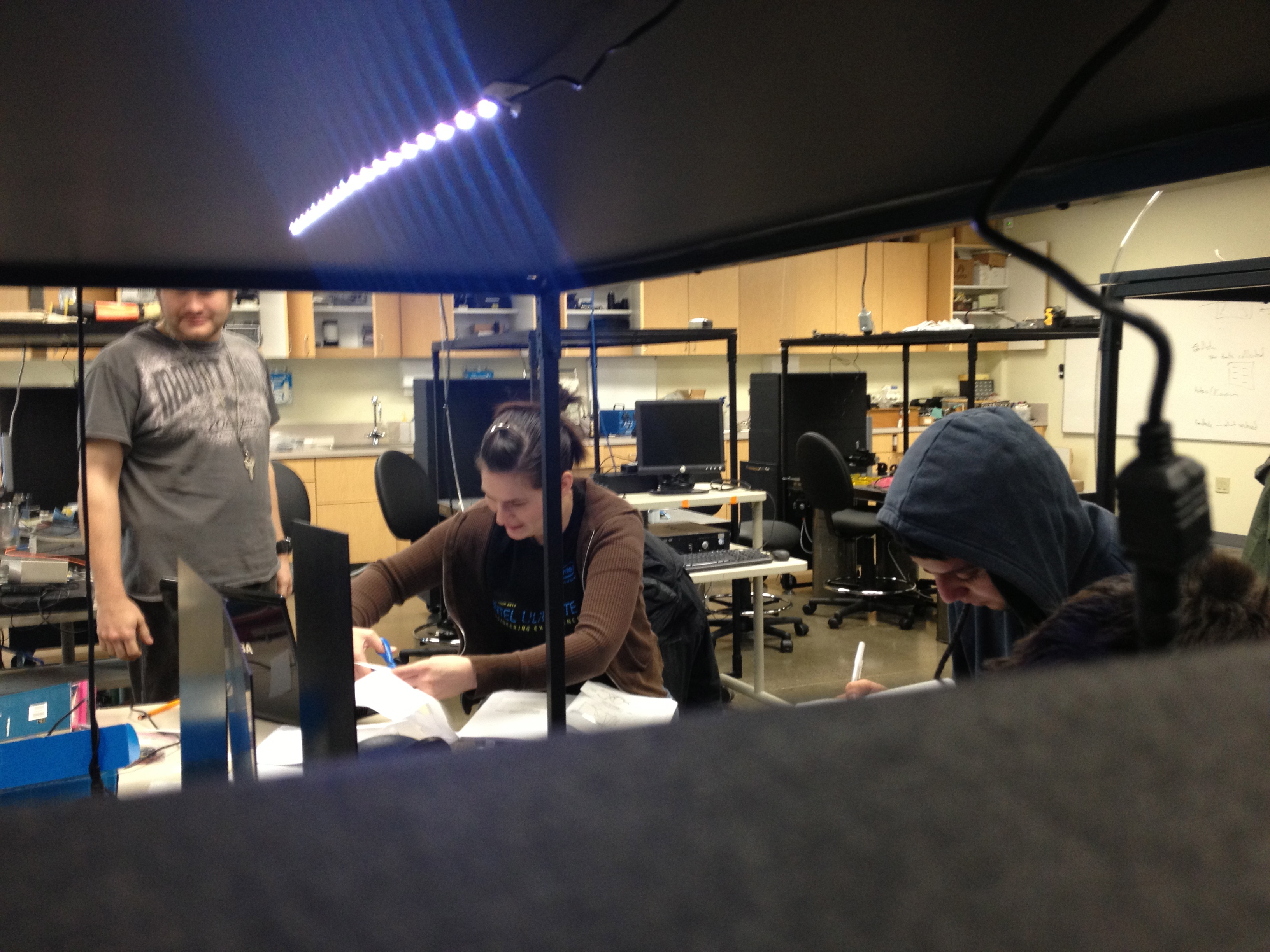 Now we spend a lot of time in the lab in the dark. If there are multiple groups
working at different tables, then inevitably, each group is marching the to tune of
a different drummer. Sometimes a group needs light when the others just want to
see the faint line that they have spent the last hour producing. Cheap, Christmas
lights provide light. Adjusting the color of the light can be handy when looking for
say, a red line &emdash; blue lighting will illuminate the labbooks without washing out
the visibility of the red line. These also work great when doing holography using
Litiholo film because the blue LEDs can be left on without influencing the exposure.
Now we spend a lot of time in the lab in the dark. If there are multiple groups
working at different tables, then inevitably, each group is marching the to tune of
a different drummer. Sometimes a group needs light when the others just want to
see the faint line that they have spent the last hour producing. Cheap, Christmas
lights provide light. Adjusting the color of the light can be handy when looking for
say, a red line &emdash; blue lighting will illuminate the labbooks without washing out
the visibility of the red line. These also work great when doing holography using
Litiholo film because the blue LEDs can be left on without influencing the exposure.
Test Equipment
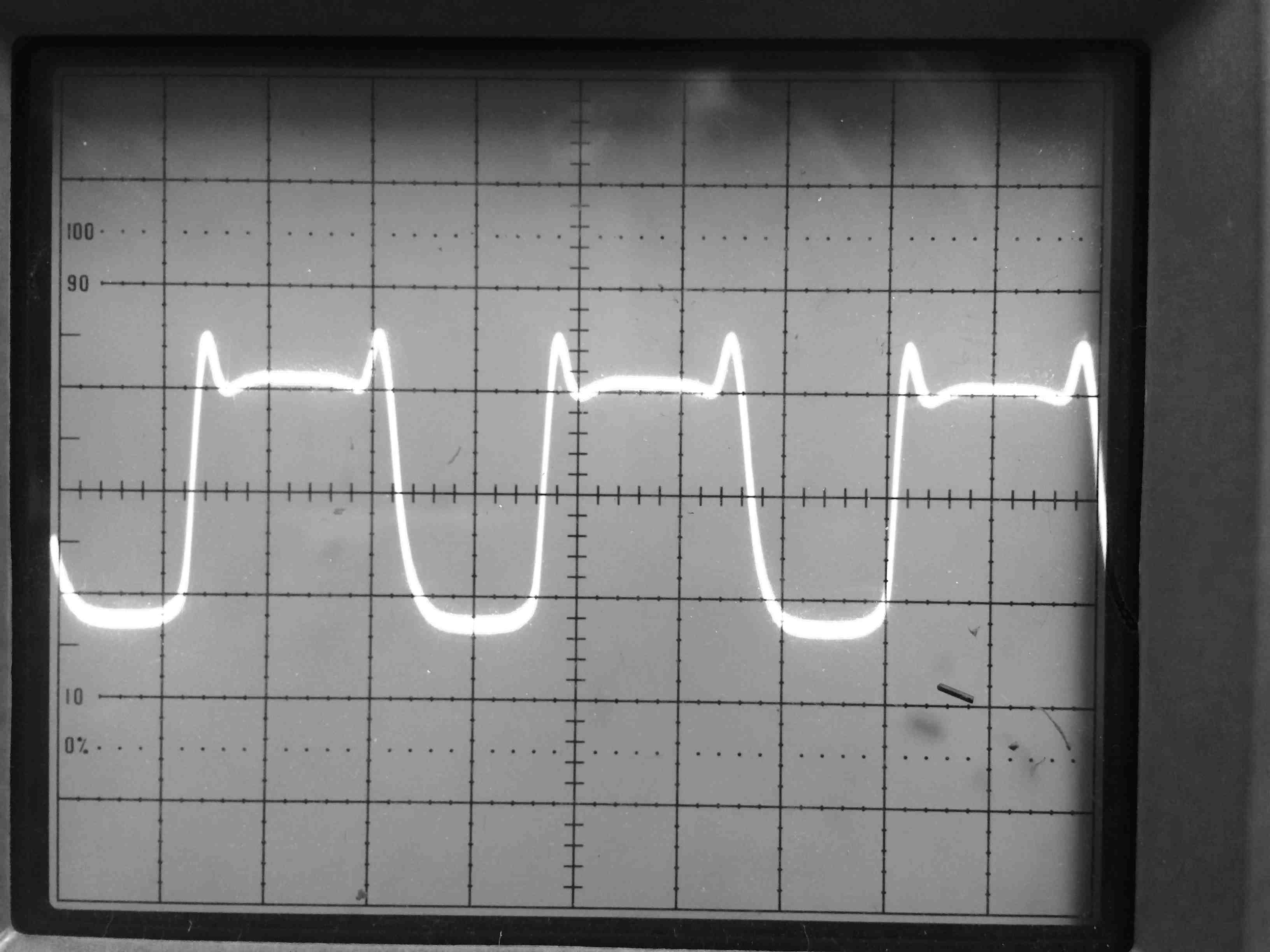 The optical engineering lab inherited some old scopes, function generators, and multimeters.
These aren't state of the art, but they get the job done. If we need better test equipment,
we borrow it from the electronics labs upstairs.
The optical engineering lab inherited some old scopes, function generators, and multimeters.
These aren't state of the art, but they get the job done. If we need better test equipment,
we borrow it from the electronics labs upstairs.
Universal Interferometers
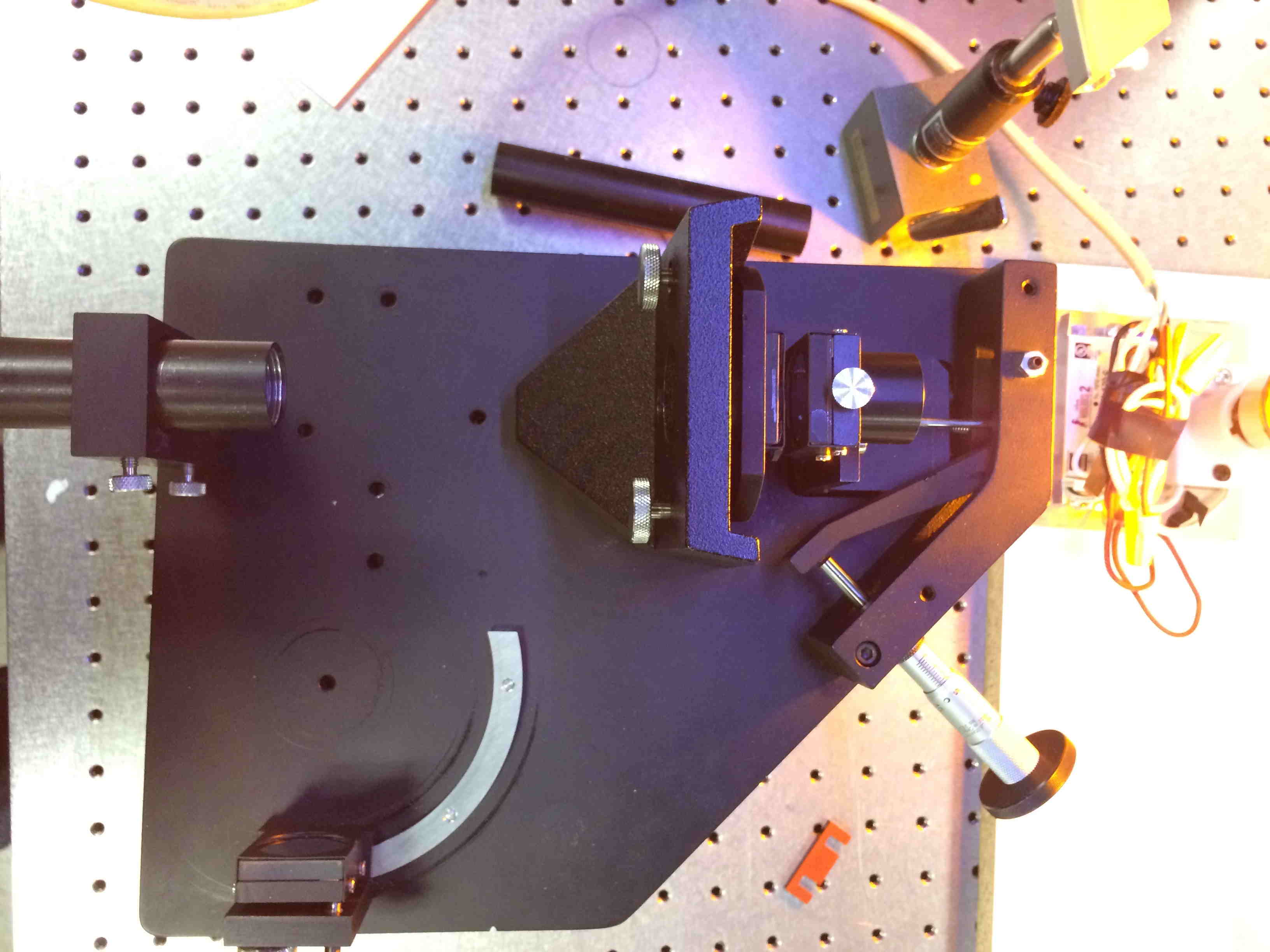 We have these ancient universal interferometers. They can be configured as Michelson,
Fabry-Perot, or Twyman-Green devices. engineering lab inherited some old scopes, function generators, and multimeters.
These aren't state of the art, but they get the job done. If we need better test equipment,
we borrow it from the electronics labs upstairs.
We have these ancient universal interferometers. They can be configured as Michelson,
Fabry-Perot, or Twyman-Green devices. engineering lab inherited some old scopes, function generators, and multimeters.
These aren't state of the art, but they get the job done. If we need better test equipment,
we borrow it from the electronics labs upstairs.
Low Pressure Sodium Lamps
 Each station has a low pressure sodium lamp. Why? Well, primarily because before
the advent of the laser, these were the most convenient (nearly) monochromatic light
source. Despite being 15W, these lamps are nice and bright and serve as an extended
monochromatic sources.
Each station has a low pressure sodium lamp. Why? Well, primarily because before
the advent of the laser, these were the most convenient (nearly) monochromatic light
source. Despite being 15W, these lamps are nice and bright and serve as an extended
monochromatic sources.
Piezo Electric Actuators
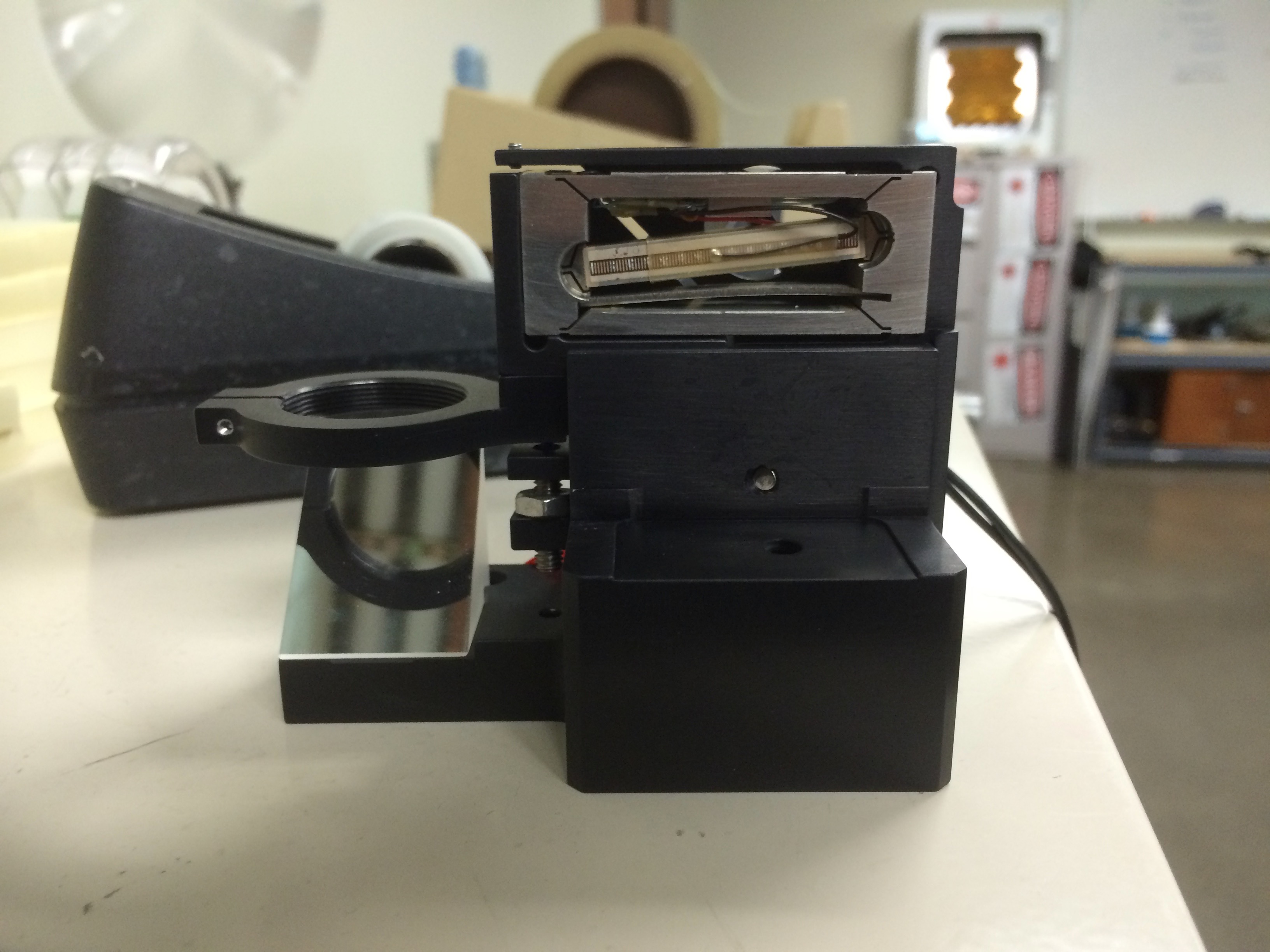 These little gizmos allow precise control of position over a range of a few hundred
microns. This makes them useful in Fabry-Perot scanning interferometers or simply
for focusing a microscope objective.
These little gizmos allow precise control of position over a range of a few hundred
microns. This makes them useful in Fabry-Perot scanning interferometers or simply
for focusing a microscope objective.
Crazy High Voltage Power Supplies
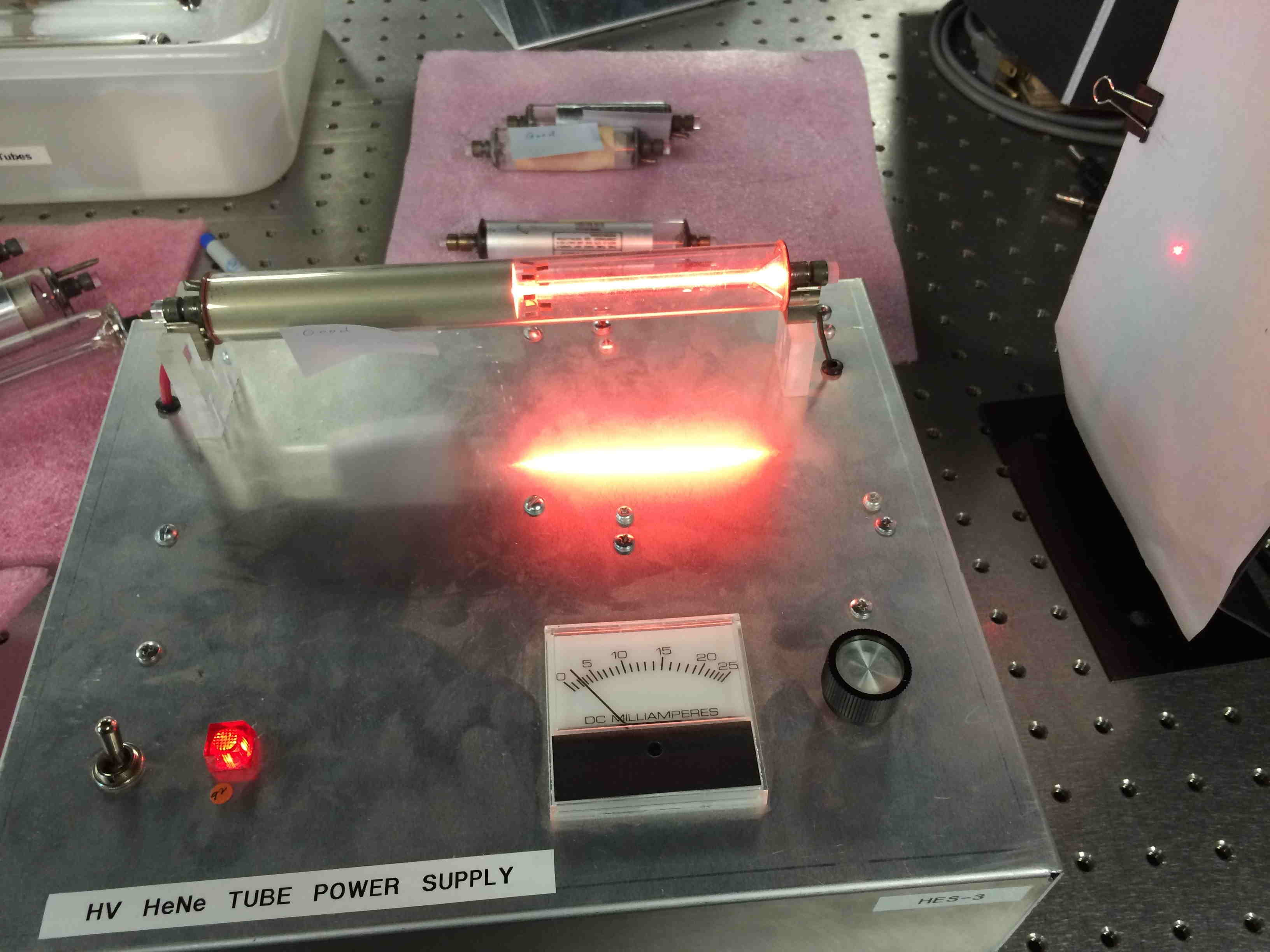 These are another item from the old laser program. The exposed ends are at roughly
2500 Volts. There is a built in gauge to show the number of milliamps flowing through the tube
and a dial to control the current. Current flow is something that is usually unknown
in commercial (safe) HeNe lasers.
These are another item from the old laser program. The exposed ends are at roughly
2500 Volts. There is a built in gauge to show the number of milliamps flowing through the tube
and a dial to control the current. Current flow is something that is usually unknown
in commercial (safe) HeNe lasers.
Optical Rails
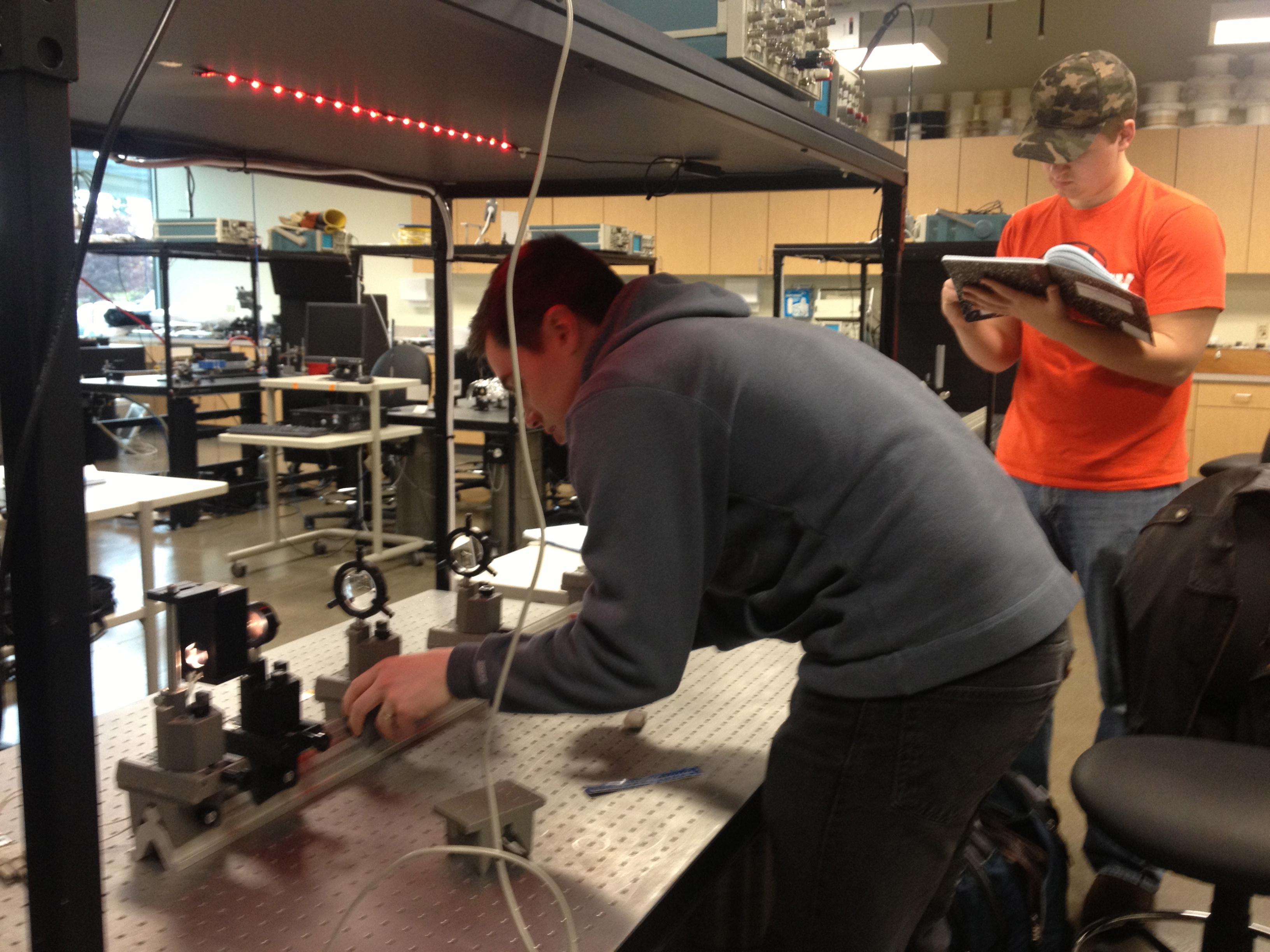
Optical rails tend not to get used in the real world --- pretty much only in classes. Optical rails are convenient when you need to change distances, but keep the centers of the lenses aligned. Or to measure distances between objects on the rails. In any case, we have a bunch of rails that are used in the geometric optics class. (Ignore the wire, it is just evidence that I will never be a great photographer.) I hate these and am actively seeking ways to minimize their use.